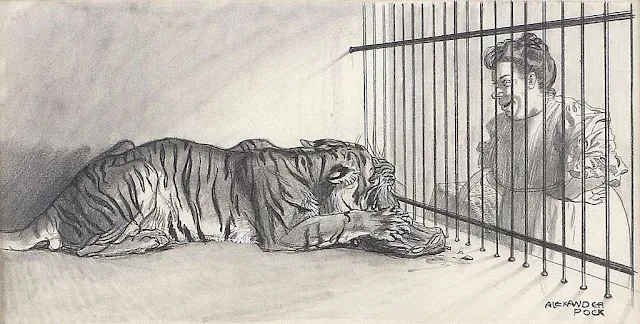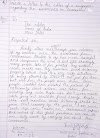Aunt Jennifer's Tigers Questions and Answers
📘 Overview of Aunt Jennifer’s Tigers
Adrienne Rich's poem talks about the constraints faced by women in patriarchal societies through the character of Aunt Jennifer, who finds solace in creating vibrant images of tigers that embody the freedom and confidence which she lacks.
📝 Short Answer Questions (1–2 Marks)
Q1. What do Aunt Jennifer’s tigers symbolize in this poem?
A1. They symbolize strength, freedom, and fearlessness—qualities that Aunt Jennifer yearns for but doesn't possess.
Q2. Why are Aunt Jennifer’s fingers described as "fluttering through her wool" in the poem?
A2. This shows her nervousness and the oppressive burden she carries, making even the simple tasks difficult.
Q3. What is meant by "the massive weight of Uncle’s wedding band" in the poem?
A3. It metaphorically represents the oppression and societal expectations linked with marriage.
Q4. How do the tigers contrast with Aunt Jennifer?
A4. The tigers are fearless, while Aunt Jennifer is timid and bound by social norms.
Q5. What does the phrase "ringed with ordeals" signify?
A5. It refers to her ongoing struggles and sufferings, even in death.
📝 2-Mark Questions and Answers
Q1. What do the words ‘denizens’ and ‘chivalric’ suggest about the tigers in the poem?
A1. The term denizens implies that the tigers are natural inhabitants of the forest, symbolizing their freedom and wild nature. The word chivalric associates them with nobility and bravery, suggesting that they embody qualities of honor and courage. Together, these words highlight the tigers' majestic and fearless demeanor, contrasting sharply with Aunt Jennifer's own constrained existence.
Q2. Why are Aunt Jennifer’s hands described as ‘fluttering through her wool’?
A2. The phrase indicates Aunt Jennifer's physical frailty and emotional distress. Her hands 'fluttering' suggest nervousness and a lack of control, possibly due to the oppressive nature of her marriage. The act of embroidery becomes a challenging task, symbolizing the weight of her domestic responsibilities and the societal expectations placed upon her.
Q3. What is meant by ‘the massive weight of Uncle’s wedding band’?
A3. This metaphor signifies the oppressive burden of Aunt Jennifer's marriage. The wedding band, typically a symbol of love and commitment, is portrayed here as heavy and restrictive, reflecting the dominance of her husband and the lack of freedom she experiences within the marital relationship.
Q4. How do the tigers contrast with Aunt Jennifer herself?
A4. The tigers are depicted as fearless, confident, and free, embodying qualities of strength and independence. In stark contrast, Aunt Jennifer is portrayed as timid, oppressed, and burdened by societal and marital constraints. This juxtaposition emphasizes the disparity between her inner desires and her external reality.
Q5. What is the significance of the phrase ‘ringed with ordeals’ in the poem?
A5. In the poem the phrase 'ringed with ordeals' suggests that Aunt Jennifer is encircled by the hardships and challenges of her life, particularly those stemming from her oppressive marriage. The use of 'ringed' also alludes to her wedding ring, symbolizing how the institution of marriage has confined and defined her existence.
📝 3-Mark Questions and Answers
Q6. Why does Aunt Jennifer create animals that are so different from her own character?
A6. Aunt Jennifer's creation of bold and fearless tigers serves as a form of escapism and silent rebellion against her repressive life. The tigers embody the freedom and strength she yearns for but cannot attain due to the constraints imposed by her patriarchal marriage. Through her art, she channels her suppressed desires and asserts a form of agency.
Q7. Explain the symbolism in the poem ‘Aunt Jennifer’s Tigers’.
A7. The poem is rich in symbolism. The tigers represent freedom, strength, and the unyielding spirit that Aunt Jennifer lacks in her own life. The 'wedding band' symbolizes the oppressive nature of her marriage, acting as a shackle that limits her autonomy. Her 'fluttering hands' signify her physical and emotional weakness, further emphasizing her constrained existence.
Q8. What does the poem convey about the status of women in society?
A8. The poem highlights the systemic oppression faced by women, particularly within the institution of marriage. Aunt Jennifer's struggles symbolize the broader challenges women encounter in patriarchal societies, where their identities and freedoms are often suppressed. The poem underscores the need for female empowerment and the assertion of individuality.
Q9. Discuss the use of imagery in the poem.
A9. Adrienne Rich employs vivid imagery to contrast Aunt Jennifer's inner world with her external reality. The depiction of the tigers as 'bright topaz denizens' creates a vibrant and dynamic image of freedom. In contrast, the portrayal of Aunt Jennifer's 'fluttering hands' and the 'massive weight' of the wedding band evoke a sense of entrapment and burden, highlighting her oppressed state.
Q10. How does the poem reflect Adrienne Rich’s feminist perspective?
A10. The poem encapsulates Rich's feminist ideology by shedding light on the constraints faced by women in patriarchal societies. Through Aunt Jennifer's character, Rich critiques the traditional roles assigned to women and emphasizes the importance of self-expression and autonomy. The poem serves as a call for female empowerment and liberation from societal norms.
📝 5-Mark Questions and Answers
Q11. Analyze the contrast between Aunt Jennifer and the tigers she creates.
A11. Aunt Jennifer and the tigers she embroiders represent two opposing realms. The tigers, described as fearless and majestic, symbolize the freedom and strength that Aunt Jennifer lacks. They move with confidence and are unafraid of men, embodying the qualities she desires. In contrast, Aunt Jennifer is portrayed as subdued and oppressed, her hands trembling under the weight of her wedding band. This stark contrast underscores the chasm between her aspirations and her lived reality, highlighting the impact of societal and marital constraints on her identity.
Q12. Discuss the theme of oppression in ‘Aunt Jennifer’s Tigers’.
A12. Oppression is a central theme in the poem, depicted through Aunt Jennifer's constrained life within a patriarchal marriage. The 'massive weight of Uncle’s wedding band' symbolizes the burdensome nature of her marital obligations. Her 'fluttering hands' reflect her inability to assert herself, and even in death, she remains 'ringed with ordeals,' indicating the inescapable nature of her oppression. The poem critiques the societal structures that confine women and suppress their voices, advocating for liberation and self-expression.
Q13. How does the poem portray the idea of art as a means of escape?
A13. In the poem, art serves as Aunt Jennifer's refuge from her oppressive life. Through embroidery, she creates tigers that embody the freedom and strength she yearns for. This creative process allows her to express her inner desires and assert a sense of control, even if only within the confines of her art. The permanence of the tigers, which 'will go on prancing, proud and unafraid,' contrasts with Aunt Jennifer's transient and constrained existence, highlighting art's potential to transcend personal limitations and societal constraints.
Q14. Examine the poem’s commentary on gender roles and expectations.
A14. The poem critiques traditional gender roles by illustrating how societal expectations confine women to submissive positions. Aunt Jennifer's life is dominated by her husband's authority, symbolized by the oppressive weight of her wedding band. Her inability to perform even simple tasks without fear shows the internalization of these expectations. In contrast, the tigers she creates defy these norms, embodying qualities traditionally associated with masculinity, such as courage and independence. This juxtaposition challenges the rigid gender binaries and advocates for a more equitable society.
Q15. What is the significance of the poem’s ending?
A15. The poem concludes with a poignant contrast: while Aunt Jennifer's 'terrified hands' will lie still in death, the tigers she created 'will go on prancing, proud and unafraid.' This ending underscores the enduring nature of art and the transient nature of human life. It suggests that, although Aunt Jennifer's physical existence was marred by oppression, her spirit and desires live on through her art. The tigers symbolize the resilience of the human spirit and the potential for liberation, even in the face of systemic constraints.
✅ Multiple Choice Questions with Answers (MCQs)
-
Who is the poet of 'Aunt Jennifer’s Tigers'?
a) Sylvia Plath
b) Adrienne Rich
c) Emily Dickinson
d) Maya Angelou
Answer: b) Adrienne Rich -
What do the tigers symbolize in the poem?
a) Domesticity
b) Oppression
c) Freedom and strength
d) Fear and submission
Answer: c) Freedom and strength -
The 'wedding band' symbolize in the peom?
a) Love and commitment
b) Wealth and status
c) Oppression and burden
d) Tradition and culture
Answer: c) Oppression and burden -
How are the tigers described?
a) Timid and shy
b) Bright and fearless
c) Lazy and indifferent
d) Aggressive and violent
Answer: b) Bright and fearless -
What literary device is predominantly used in this poem?
a) Simile
b) Metaphor
c) Symbolism
d) Irony
Answer: c) Symbolism -
What does Aunt Jennifer's embroidery represent in the peom?
a) Her domestic duties
b) Her suppressed desires
c) Her artistic talent
d) Her social status
Answer: b) Her suppressed desires -
What is the tone of the poem?
a) Joyful and celebratory
b) Reflective and somber
c) Angry and confrontational
d) Indifferent and detached
Answer: b) Reflective and somber -
What does the phrase 'ringed with ordeals' imply in this poem?
a) Surrounded by jewelry
b) Encircled by challenges
c) Protected by traditions
d) Bound by love
Answer: b) Encircled by challenges






